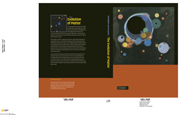Book contents
- Frontmatter
- Contents
- Introduction
- Part I The elements
- Part II Early solar system: nebula formation, evolution and lifetime
- Part III Accretion of the Earth
- Part IV Global evolution of the Earth
- 22 First look at the Earth
- 23 The plate-tectonic concept: some phenomenology
- 24 Ocean-ridge and island magmatism
- 25 Subduction and island-arc magmatism
- 26 Composition of the continental crust: magmatic, metamorphic and sedimentary processes
- 27 Isotopic records of the evolution of Earth's accessible reservoirs
- 28 Geochemical Earth model
- References
- Glossary
- Abbreviations
- Meteorites, rocks and minerals
- Index
22 - First look at the Earth
Published online by Cambridge University Press: 04 September 2009
- Frontmatter
- Contents
- Introduction
- Part I The elements
- Part II Early solar system: nebula formation, evolution and lifetime
- Part III Accretion of the Earth
- Part IV Global evolution of the Earth
- 22 First look at the Earth
- 23 The plate-tectonic concept: some phenomenology
- 24 Ocean-ridge and island magmatism
- 25 Subduction and island-arc magmatism
- 26 Composition of the continental crust: magmatic, metamorphic and sedimentary processes
- 27 Isotopic records of the evolution of Earth's accessible reservoirs
- 28 Geochemical Earth model
- References
- Glossary
- Abbreviations
- Meteorites, rocks and minerals
- Index
Summary
In Part IV we distinguish and characterize the principal reservoirs of the present-day highly differentiated planet and the most important processes by which matter is transferred between them; as we saw in Parts I–III, the crucial tools are the abundances of the major and trace elements as well as the relevant isotopic systematics. We will trace these processes and reservoirs into the geological past in order to arrive at the post-accretion Earth of ∼ 4.5 Gyr ago (Part III), which consisted of a metal core, a core–mantle transition zone, a vigorously convecting silicate mantle, a comparatively short-lived basaltic crust and an early, still dissipating, atmosphere. As in Parts I–III, we present the observational data first and then consider the corresponding processes and models.
To understand our dynamic planet, a multidisciplinary approach is needed. First, the geological aspect involves studying terrestrial materials and deducing the processes that have created them and brought them to where they are now. Second is the physical approach, geophysics, probing the depths of the Earth. The theoretical investigation and modelling of natural materials and processes constitute the third approach.
Such a multidisciplinary approach allows an in-depth interpretation of the observational data and more reliable constraints on specific processes and materials. The rewards are a better understanding of the evolution and present-day state of the Earth: the plate-tectonic model of the present-day Earth presents an impressive example (e.g. Brown et al., 1992a).
- Type
- Chapter
- Information
- The Evolution of MatterFrom the Big Bang to the Present Day, pp. 291 - 292Publisher: Cambridge University PressPrint publication year: 2008



